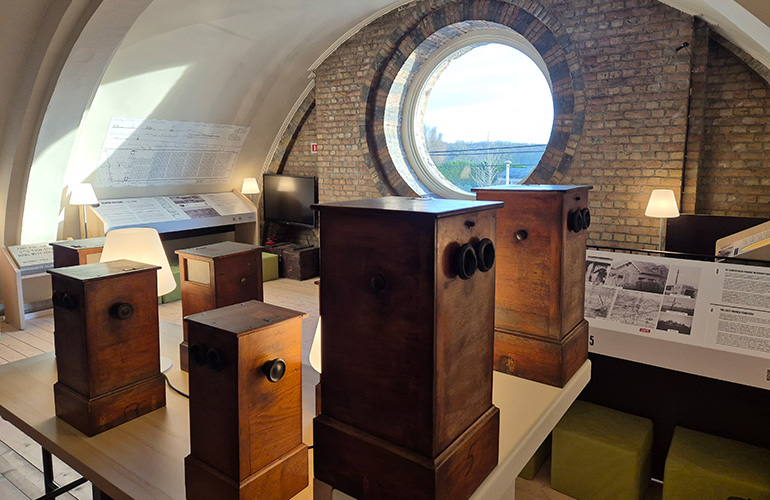These unique stereoscopes offer an unprecedented view of the First World War. They operate on the principle of stereoscopy: each glass plate contains two identical photos placed side by side. When the viewer looks at the right image with the right eye and the left image with the left eye, the eyes naturally align, creating a sense of depth, as if the images were in 3D. By turning a knob on the side of the stereoscope, the viewer can switch between photos.
The stereoscopes at the Hooge Crater Museum evoke pure nostalgia, reminiscent of the many café-museums of the past.
Recently, we acquired eighteen stereoscopes that previously belonged to the now-defunct Hill 60 Museum. Twelve of these are currently on display: three in the café, two on the ground floor of the museum, and seven upstairs. At the same time, Niek and Ilse were able to expand their modest collection of glass plates to around 1,000 pieces. Each stereoscope contains 28 carefully curated plates.
The focus is not on destroyed buildings, but on life at and behind the front lines: soldiers, animals, tanks, vehicles, and more. Some images, however, depict scenes that may be unsettling to sensitive viewers, such as bodies lying in mud, mutilated corpses, and decaying horses. These have been placed in two stereoscopes at a height of 160 cm to prevent children from being exposed.

